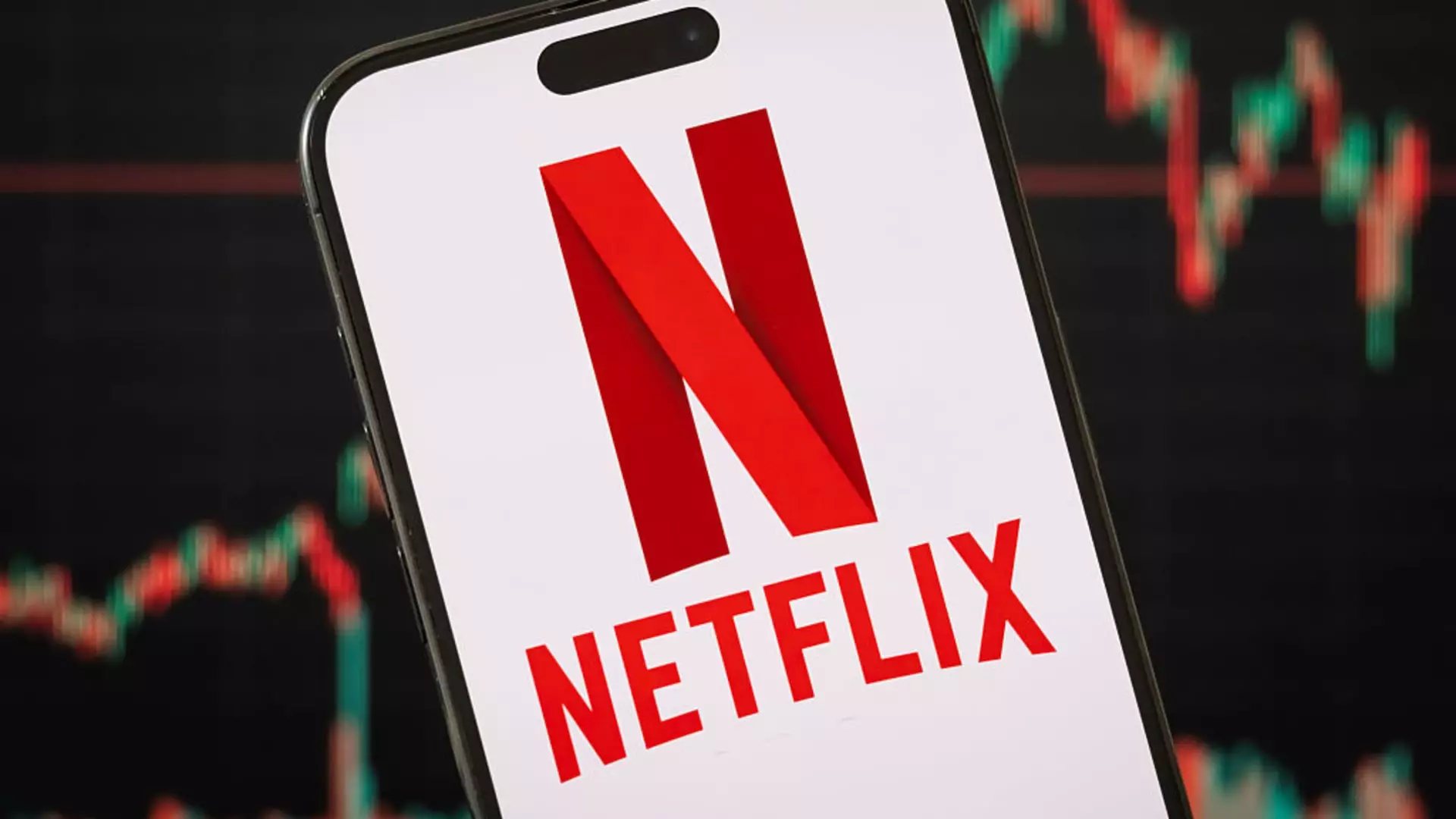Netflix is currently enjoying an extraordinary unprecedented run, achieving an 11-day streak of stock increases. This impressive performance surpasses even its previous records. While many investors remain skeptical about the sustainability of such riches, one can’t help but acknowledge the underlying indicators that have lifted Netflix to this level—especially during an era marked by economic uncertainty. The company’s stock is now soaring to levels unseen since its public debut in 2002, signaling its domination within an increasingly saturated streaming market.
The Resort to Resilience Amidst Market Turbulence
While traditional media stocks feel the pinch from tariffs and geopolitical tensions, Netflix has steered clear of significant downturns. In contrast, heavyweights like Warner Bros. Discovery and Disney are being pummeled, suffering declines of nearly 10% and 13% respectively. Amidst this chaos, Netflix declares its resilience. Co-CEO Greg Peters emphasized that historical trends indicate entertainment remains stable during economic duress—a point that cannot be taken lightly. Netflix’s adaptability is commendable, giving investors a solid basis for confidence even when broader market conditions suggest otherwise.
A Leap of Faith with Revenue Growth
Netflix recently unveiled its earnings report, revealing a commendable 13% revenue growth for the first quarter of 2025. This rise can be attributed to burgeoning subscription rates and advertising income that far surpassed analysts’ expectations. What’s significant here is not merely the growth itself but the fact that Netflix is confidently projecting its full-year revenue between $43.5 billion and $44.5 billion, hinting at a trust in sustained consumer interest. Their willingness to maintain such foresight amid an unpredictable economic landscape indicates a formidable business strategy at play.
Price Increases: A Double-Edged Sword
However, Netflix’s upward trajectory does come at a price—the literal kind. With subscription plans now priced as high as $24.99 for their premium option, the question must be asked: Has the value proposition eroded for the average consumer? While the company reports that it has managed to retain its user base despite rising prices, the omission of explicit subscriber metrics raises eyebrows. Is this growth sustainable, or are they simply banking on existing consumers to weather the storm? The fine line between increasing revenues and potentially alienating their audience looms large over Netflix’s business model.
Advertising Evolution: A Trendsetter’s Play
Another noteworthy aspect of Netflix’s strategy is its evolving approach to advertising. As the company aims to scale back reliance on subscription fees, the introduction of an ad-supported tier priced at $7.99 offers a more budget-friendly option for cost-sensitive viewers. This move could potentially draw in a demographic that would otherwise consider alternatives or, worse, abandon streaming altogether. Yet, it raises a pivotal question about user fatigue with advertisements. The balance between ad revenue and user experience will be crucial for the platform’s longevity.
Global Leadership and Market Potential
Analysts from JPMorgan underscore Netflix’s position as the de facto leader in global streaming, hinting that such a status will catalyze further growth. As the company aspires to redefine traditional television boundaries, it’s crucial to consider how it positions itself amidst burgeoning competition. The pathway to becoming the global television standard hinges on its ability to continually innovate and deliver exceptional content while remaining vigilant of its subscriber needs. In short, can Netflix maintain its innovative edge and broaden its appeal to diverse audiences?
Netflix’s current success is both a testimony to its strategic acumen and a bellwether for an industry in transition. As it navigates rising prices and shifting market demands, its steps will be crucial in determining if the current streak can evolve into something more durable. The company’s trajectory will be vital not just for its shareholders but for the industry’s future as a whole.

